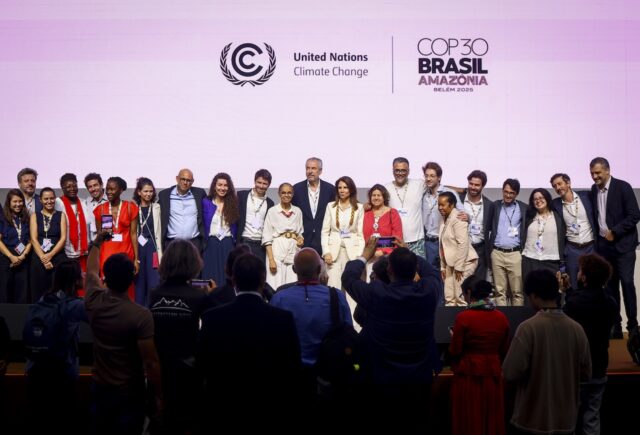Nature-based projects rose by an average of 15% annually between 2012 and 2021, yet scaling the sector remains a challenge, according to a report from the World Resources Institute and the World Bank.

A new report has highlighted the extent to which nature-based solutions (NBS) are gaining traction in sub-Saharan Africa, a region that is increasingly turning to nature to combat climate threats.
The report, compiled by the World Resources Institute and the World Bank – with contributions from the African Development Bank, analysed nearly 300 projects over the past decade to uncover what types of solutions are working well, and to consider the challenges the sector faces in scaling up.
According to the report, the number of new NBS projects, such as restoring forests, wetlands, floodplains, and coral reefs, has grown by an average of 15% annually between 2012 and 2021.
“Nature loss and climate risks are inherently linked, especially here in Africa,” said Qimiao Fan, the World Bank’s country director for Kenya, Rwanda, Somalia, and Uganda. “We need to ensure that projects and policies comprehensively address the challenges and offer inclusive and effective solutions for the most vulnerable groups.”
Financing gap
These initiatives are proving their worth by mitigating climate risks such as flooding, drought, and extreme heat, as well as creating jobs and supporting biodiversity, and social equity, according to the report.
However, while interest in NBS is rising, the financial backing required still falls short, the report stressed.
Between 2012 and 2021, funding for NBS projects in SSA increased by 23% annually, reaching more than €11bn. Yet, this figure falls short of the continent’s €95bn annual infrastructure financing gap.
The report comes at a time when NBS are increasingly recognised as powerful interventions for strengthening climate resilience, enhancing ecosystem services and biodiversity, as well as addressing infrastructure needs.
With climate disasters such as extreme heat, flooding, and water scarcity escalating, the region finds itself on the frontlines of the global climate crisis, with floods and unprecedented heat waves serving as a stark reminder of what’s at stake.
Scaling Up
The report found that projects were often co-funded by multilateral development banks (MDBs), multilateral donors and funds, and national governments. MDBs have been the primary funder of 70% of projects, with national governments and multilateral donors, including international organisations like the United Nations Environment Programme and United Nations Development Programme, as well as multilateral funds such as the Global Environment Facility and Green Climate Fund, often co-funding projects.
Methods to increase investment into NBS highlighted in the report included integrating nature into policy frameworks, building technical capacity for project development, and diversifying financing mechanisms.
However, a major gap remains. Urban areas, which are highly vulnerable to climate risks, have seen relatively few NBS projects. This is despite the fact that 70% of African cities face severe climate challenges such as flooding, extreme heat, and mudslides, while grappling with inadequate infrastructure.
“We often think of infrastructure in terms of roads, bridges, and buildings, just concrete and steel structures,” said Ani Dasgupta, president & CEO of WRI.
“But nature, such as forests, trees, wetlands, coral reefs, is just as vital. It supplies clean water, protects communities from disasters, and strengthens resilience. Across Africa, cities and communities are proving that green and grey infrastructure can work together to maximise benefits for people, nature, and climate, and the world should take note,” Dasgupta added.
Traditional solutions like dams and engineered drainage remain necessary, but nature can play a crucial role in strengthening resilience. For instance, protecting forests in watersheds can help regulate water supplies and prevent erosion, ultimately reducing long-term infrastructure costs.
Infrastructure accelerator
Speaking to Impact Investor, Lizzie Marsters, senior environmental finance manager at Cities4Forests and the Natural Infrastructure Initiative at WRI said that the most promising investment opportunity lies in combining nature with traditional gray infrastructure, with green-gray projects that draw on the strengths of both approaches.
“These projects can tap into stable revenue streams from infrastructure and utility projects, like water tariffs and tax revenue, while using nature to increase efficiency and lower delivery costs, such as by keeping hydropower reservoirs and water filtration plants free of sediment runoff,” said Marsters.
As such, the WRI is launching the ‘Green-Gray Infrastructure Accelerator’ project to support 11 cities integrate NBS with traditional infrastructure across the region.
It is hoped this initiative will provide technical and financial support to help cities develop more projects and attract investment to scale existing developments.






